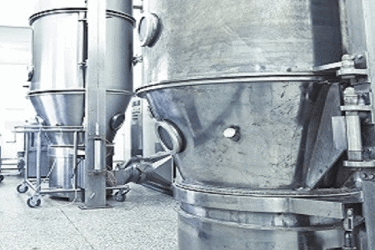Outsourced Manufacturing Considerations For M&A Technical Due Diligence
By Anthony Grenier

My previous article on the regulatory and quality aspects of M&A technical due diligence looked at how to ensure you acquire products that can be outsourced properly to a third-party manufacturer. This second part will cover considerations for the manufacturing process and equipment as well as some aspects of logistics and operations.
Manufacturing
When an acquirer purchases a product’s manufacturing rights, that company not only acquires a formula but also a manufacturing process. The manufacturing party can be a pharmaceutical company or a contract manufacturing organization.
When a Big Pharma company divests some of its products, it usually includes the technology transfer of these products, so that it can physically divest its manufacturing network of the products. There have been a large number of such deals over the past decades.
The acquirer will therefore have to look at the data room through the eyes of a purchaser, as well as with the perspective of having to transfer the product to its own or another manufacturing facility after the acquisition is complete.
The following documents will help provide a better chance that the products can be transferred from the donor site with sufficient knowledge to ensure successful production:
Executed batch records: The master batch records are part of the data room, but having the opportunity to review the executed batch records during a second or final round of bidding will inform the acquirer on the actual process parameters, processing times, and yields. I have seen older products with wide ranges for the mixing times in the batch records. For example, a manufacturing instruction stating, “Mix for at least 30 minutes” and a recorded time of 4 hours will inform the reviewer that the process is not necessarily optimized for the equipment and a longer process time will necessarily have an impact on the production cost of the product.
Process validation reports: Every acquirer would like to inherit a robust and reproducible manufacturing process. Achieving this goal is one of the main purposes of the validation studies. Retrospective validation for old products will not provide this. Therefore, a copy of a prospective or concurrent validation report must be provided to the acquirer. If the process was validated recently using development reports based on quality by design (QbD), that is ideal. At the opposite end of the spectrum, processes that had to be revalidated too often due to rejected batches or out-of-specification results will indicate that the process is not robust at the end, as it will vary with the variation of other factors, such as, for example, variation in the physical properties of the raw materials.
Master supply agreement (MSA): The acquirer will review the MSA when one of several products that ispart of the due diligence is already outsourced to a CMO. This legal document outlines, among many other critical points, the mechanism to resolve supply or manufacturing issues. It should give the acquirer assurance that if things go wrong there will be ways to remediate the problems and avoid as much as possible the disruption of the product’s supply to market. For example, an “inability to supply” section will detail how the parties (the CMO and the product owner) will collaborate and take action following a situation when the product cannot be produced within specifications anymore. Having the minimum production yields listed per product in the appendixes along with the price list is also recommended. These two examples illustrate how specific articles and appendixes in the MSA can be important assets for the acquirer.
Equipment
Acquisition of pharmaceutical product(s) sometimes comes with equipment. It is the responsibility of the acquirer to get a clear understanding of the following two points:
- Is there any product-dedicated equipment involved in the manufacturing or packaging process of the product(s) to be acquired?
- If so, who will own the equipment? Is it the product owner or the CMO?
While compression or packaging tooling is usually owned by the product owner, it is less clear when it comes to equipment. Some pharmaceutical companies pay upfront for the equipment, while some amortize the cost of equipment in the product cost over a certain period of time. It is also possible for the CMO to decide to purchase the specific equipment and to try to bring other products onto that equipment (as long as cleaning validation is possible).
The acquirer should therefore be cautious and understand clearly to what extent the production of the product(s) is bound not only by contract but also by the transfer of technology to the CMO.
Logistics & Operations
It is quite common to acquire a product that is marketed in multiple territories. In such cases, the number of SKUs (stock keeping units) can quickly become large. It is important to understand the number of printed components that will have to be updated with the change of ownership, including, for instance, the company name and logo. I have seen a single product marketed in 10 countries for which a total of 40 different formats/presentations were required. Managing so many logos and formats could be significant for a small virtual company from an operations and regulatory point of view.
In the late stage of bidding in a due diligence process, the acquirer will have to clearly understand the length of the transition period and make sure it is long enough to accommodate the tech transfer of the products to a CMO. Despite the fact that a tech transfer can be managed in six months, a minimum 12-month transition period is highly recommended. This will provide a better chance of avoiding product disruption in the market during the transition to the new product owner.
How inventory of raw materials, API, and packaging components will be managed is important. Some items might be used at the receiving site if they are still valid. Printed components will typically have to be reprinted with new artwork and, therefore, some will have to be destroyed.
Special attention will have to be paid to narcotic products. Some countries, such as the U.S., have production quotas. Therefore, all quantities in the inventory, such as rejects and intermediate products, will count toward the total quantity of API for which DEA assigns yearly quotas.
Obtaining a copy of all the existing inventory and disposing of as much as possible of useless or expired inventory will give the acquirer more leeway. This will enable the purchaser to maximize the allocated quotas and be able to meet demand in subsequent years.
Conclusion
Technical due diligence is similar to a building inspection prior to buying a house — both ensure that your investment is a good bet. Looking at all the aspects of a product’s data and history help make sure it will be a good investment down the road.
About The Author:
 Anthony Grenier is an independent technology transfer and outsourcing consultant. A chemical engineer by training, he has completed over 50 technology transfers for both large, public multinational corporations and small specialty or virtual pharma companies, spanning all major segments of the life science industry. He can be reached at agrenier.ag@gmail.com, www.anthonygrenier.com, or https://ca.linkedin.com/in/grenieranthony.
Anthony Grenier is an independent technology transfer and outsourcing consultant. A chemical engineer by training, he has completed over 50 technology transfers for both large, public multinational corporations and small specialty or virtual pharma companies, spanning all major segments of the life science industry. He can be reached at agrenier.ag@gmail.com, www.anthonygrenier.com, or https://ca.linkedin.com/in/grenieranthony.
